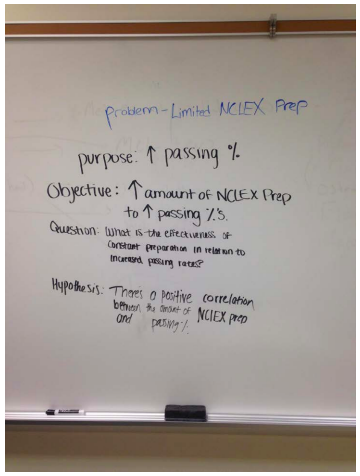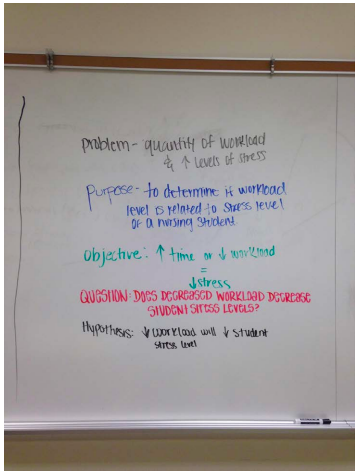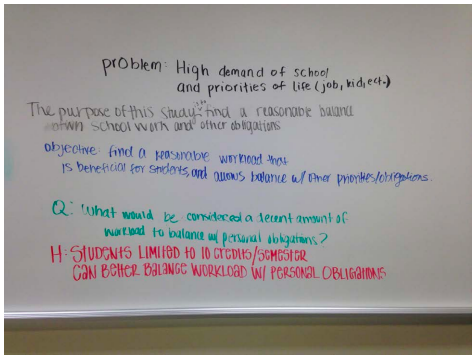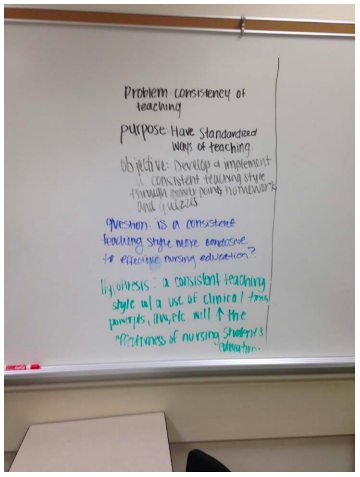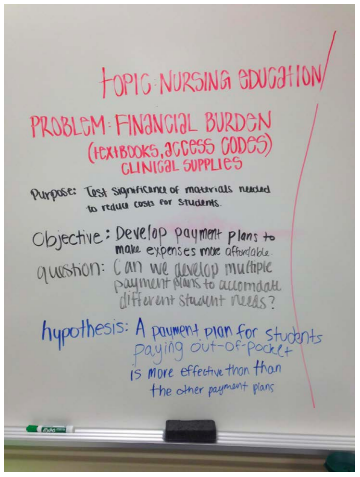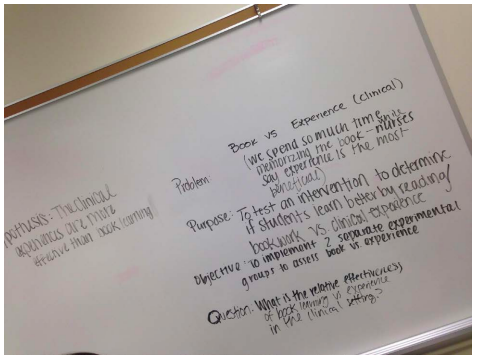3 Rotating Stations: Problem and Purpose and Question, Oh My!
| Prerequisite Knowledge |
|
| Learner Setting | Classroom |
| Strategy Type | Small group |
| Time | Faculty prep: <5 minutes
Delivery with students: 45 minutes Evaluation: 15 minutes |
| Learning Objectives |
|
| Materials/Resources | Markers and whiteboard (or large sheets of paper attached to walls or easels)
Instructor-generated example (see below) Sample classroom diagram (see below) Critique questions (see below) Photos of student examples (see below) |
| Strategy Overview | The purpose of this strategy is to provide students with an opportunity to practice their understanding of the connections between various elements found in a research report (research problem, study purpose, objectives/aims, research question, and hypothesis). Through a collaborative small group activity, students rotate through various “stations” in the classroom and create their own research problems, purposes, etc. and then critique the student-generated examples. The instructor circulates among the groups during the course of this activity, providing clarification and feedback but not always correction, leaving the groups something to critique and discuss. Groups then answer a set of critique questions using the example at their final station. Groups share their critiques and impressions of the learning experience with the whole class. |
| Steps |
|
| Evaluation | Low stakes – Instructor feedback during class activity and/or credit for active participation |
Rotating Stations: Instructor-generated Example
- Topic: A broad area that includes many potential research problems
- Example: Side effects of chemotherapy
- Problem: An area of concern within the broad topic of interest
- Example: Nausea and vomiting are common side effects among patients on chemotherapy, and interventions to date have been only moderately successful in reducing these effects. New interventions that can reduce or prevent these side effects need to be identified.
- Purpose: A summary of the overall goal of the study
- Example: The purpose of this study is to test an intervention to reduce chemotherapy-induced side effects
- Objectives/aims: The specific accomplishments the researchers hope to achieve through this study
- Example: The objective of this study is to develop and implement two alternative procedures for administering antiemetic therapy for patients receiving moderately emetogenic chemotherapy (patient-controlled versus nurse-controlled).
- Question: The specific question the researchers hope to answer in addressing the research problem
- Example: What is the relative effectiveness of patient-controlled antiemetic therapy versus nurse-controlled antiemetic therapy with regard to (a) medication consumption and (b) control of nausea/vomiting in patients on chemotherapy?
- Hypothesis: A statement of predicted relationships between variables
- Example: Subjects receiving antiemetic therapy by a patient-controlled pump will (1) be less nauseated, (2) vomit less, and (3) consume less overall medication than subjects receiving the therapy by nurse administration.
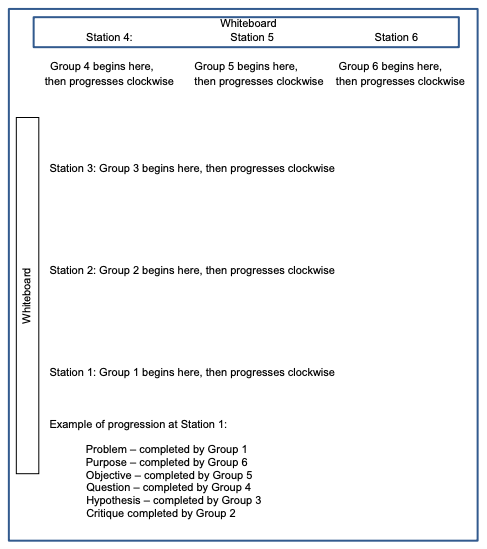
Rotating Stations: Critique questions
Now that you’ve completed your rotation through the room, consider the following questions for your current station. I’ll ask each of the groups to share an answer with the class.
- Is the problem clear and concise?
- Does the purpose express the goal/focus of the study?
- Is the objective/aim based on the study purpose?
- Does the question direct the type of data that will be collected?
- What type(s) of hypothesis is it?
- Does the hypothesis identify the relationships among the variables in the study?
Rotating Stations: Photos of student examples
